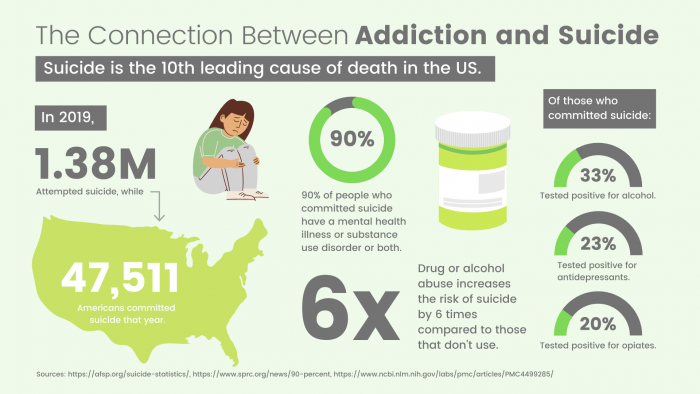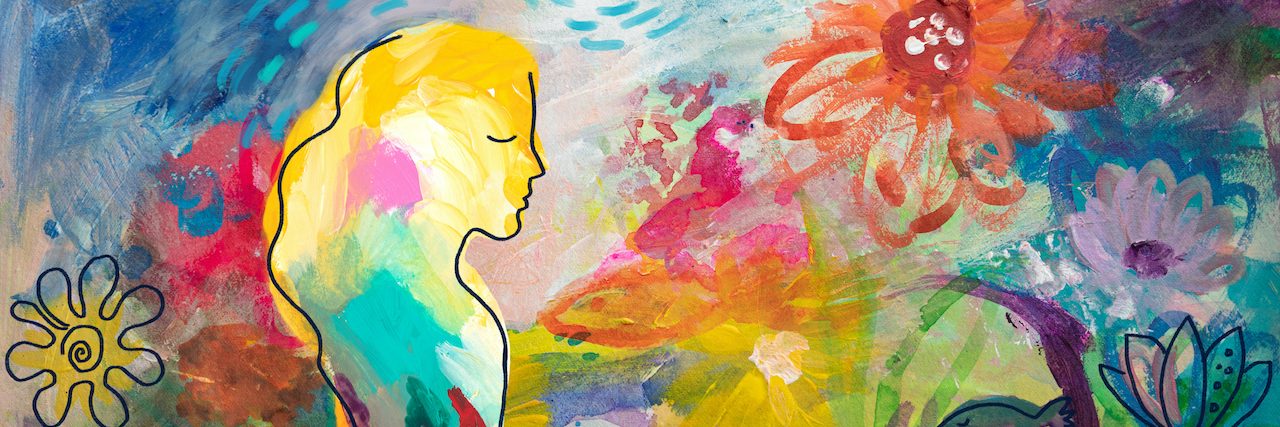In the complex landscape of substance use disorder, the lines between accidental overdose and suicide blur, creating a silent crisis many don’t fully grasp.
According to the Addiction Center, men with opioid use disorder are twice as likely to die by suicide, while the risk skyrockets to eightfold for women with similar conditions. Furthermore, opioid use increases the likelihood of suicidal thoughts by 40%-60% and amplifies the risk of suicide attempts by an alarming 75%.
A study from PubMed shows that over half of all suicides are intertwined with alcohol and drug dependence. An estimated 25% of people grappling with these addictions die by suicide. This alarming statistic also extends to our youth, where a significant 70% of adolescent suicides may be entangled with drug and alcohol use.
It’s clear that substance use disorder isn’t just about the physical dependencies — it’s about the unseen, emotional toll it takes, often culminating in the most tragic outcome.

Understanding the Overlap
Addiction, self-harm, and suicidal tendencies frequently co-exist. All three are associated with imbalances in neurotransmitters, particularly serotonin.
The brain’s reward and pain pathways are closely intertwined. Addiction, often driven by the brain’s reward system, can push people towards substances or behaviors that offer short-term relief from emotional pain. This can create a paradox where the very substances meant to numb the pain amplify it.
Simultaneously, self-harm might manifest as a way to cope with overwhelming emotions or as a physical manifestation of inner turmoil. It’s a means to take control of your body when everything else seems chaotic.
Psychologically these behaviors, while harmful, can be seen as coping mechanisms. Trauma, feelings of isolation, or genetic predispositions can push people into these cyclical patterns of harm. The emotional distress associated with one issue can trigger another, forming a nexus of interrelated challenges.
Consider a person using substances to numb emotional pain, leading to addiction. The repercussions of this addiction might exacerbate feelings of guilt, shame, or hopelessness. These feelings might then manifest as self-harming behaviors. In turn, the physical and emotional aftermath of self-harm can plunge one further into despair, culminating in suicidal thoughts or actions.
The tragedy of this cycle is its self-perpetuating nature. Each component intensifies the others, creating a feedback loop that can be difficult to interrupt.
How to Break the Cycle
Breaking the cycle of addiction, self-harm, and/or suicidal thoughts helps improve your health, emotions, and relationships, highlighting the importance of life. Overcoming these challenges can lead to new opportunities, personal growth, and a rekindled sense of purpose. Here’s how you can take a step forward:
- Acknowledge the existence of the problem.
- Understand personal triggers and patterns.
- Identify and avoid situations or things that spark negative feelings or cravings.
- Make a conscious effort to change routines or environments that are problematic.
- Engage in hobbies or activities that divert the mind and provide a positive distraction.
- Replace harmful habits with healthier ones, e.g., exercise over substance abuse.
- Practice regular meditation to stay centered and reduce stress.
- Use mindfulness techniques to stay present and avoid spiraling negative thoughts.
- Seek help if challenges intensify or feel unmanageable.
- Establish a consistent daily routine to add structure and purpose.
- Ensure the routine includes self-care and positive activities.
- Understand that therapy is a strength, not a weakness.
- Join support groups for shared experiences and healing.
- Listen to stories from those who’ve overcome similar challenges for inspiration.
Recognizing the Red Flags in Ourselves
Being introspective and self-aware is critical, especially regarding potentially life-threatening behaviors and patterns.
- Internal feelings and thoughts: Pervasive feelings of hopelessness, extreme guilt, unbearable emotional pain, or a belief that one is a burden can all be warning signs. Thoughts of wanting to disappear or believing that others would be better off without oneself can signal more profound distress.
- Physical signs and behaviors: These might include increased substance intake or dependency, unexplained bruises, cuts, or burns, wearing long sleeves or pants even in warm weather to cover up marks, and a sudden disinterest in previously enjoyed activities. Another sign can be making preparations, such as giving away possessions or making final arrangements.
Recognizing the Red Flags in Others
Being observant and proactive can make all the difference when it comes to loved ones.
- Observations and behaviors: Noticeable changes in behavior, like withdrawal from social circles, a decline in performance at work or school, or drastic mood swings, can be telling. Additionally, verbalizing or hinting at self-harm or suicidal thoughts should always be taken seriously.
- Importance of being an active and compassionate observer: Sometimes, the signs might not be overt. Subtle changes in behavior, cryptic social media posts, or even a gut feeling that something isn’t right should be heeded. It’s always better to approach someone with concern and learn that they’re OK than to dismiss potential signs and later regret not acting.
How Friends and Families Can Help
Friends and family members are indispensable in the recovery journey of those battling addiction, self-harm, or suicidal thoughts. This support often means the difference between isolation and connection, despair and hope.
- Being an active listener: It’s not always about having the right words; sometimes, just lending an empathetic ear can provide immense relief. Actively listen without judgment, ensuring the individual feels heard and validated. Refrain from interrupting or offering solutions unless asked.
- Offering support, not solutions: It’s natural to want to “fix” things, but recovery is a personal journey. Instead of pushing solutions, provide steady support, reinforcing that you’re there for them no matter what. Respect their pace and decisions in the healing process.
- Educating yourself: Understanding the intricacies of addiction, self-harm, or suicidal thoughts equips you to offer more informed support. Attend workshops, read up on these subjects, or join support groups for friends and families. The more you know, the better ally you can be.
While professionals offer structured therapy and treatments, friends and family bring in the warmth, understanding, and unwavering support that can make all the difference. This complements professional help with genuine concern, love, and patience.
Whether you’re someone grappling with these challenges or a loved one looking to offer support, you have a role in recognizing and addressing the connection between substance use and suicide.
Remember, there’s a Mighty community rooting for you. You’re not alone.
Getty image by stellalevi

